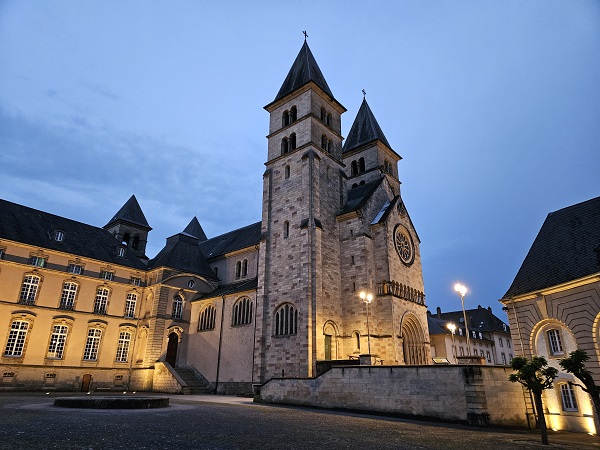 Basilica of Saint Willibrord, Echternach;
Credit: Jazmin Campbell/Chronicle.lu
Basilica of Saint Willibrord, Echternach;
Credit: Jazmin Campbell/Chronicle.lu
Luxembourg, nestled in the heart of Europe, boasts various architectural splendours, with several that nowadays combine history and contemporary innovation.
In this series of articles, Chronicle.lu will offer an overview of various architectural gems in the Grand Duchy. Part 1 looks at architecture in the Vauban and Neo-Gothic styles.
Vauban
The history of Luxembourg is linked to its architecture. Its origins date to 963 AD, when Count Siegfried acquired an ancient fort called "Lucilinburhuc" - often translated as "little castle". A town grew around the fortress of Luxembourg, and it became an important spot for neighbouring lands. Situated on the Bock, a rocky outcrop, Luxembourg's fortress expanded and strengthened over nine centuries. When Sébastien Le Prestre de Vauban, the renowned military engineer, created fortifications that further defined Luxembourg City's strategic significance, the fortress of Luxembourg evolved into one of Europe's strongest bastions by the Renaissance. Its walls witnessed various conflicts, earning Luxembourg the moniker "Gibraltar of the North". Having developed into a federal fortified city during the Prussian era, its fortress was deemed impregnable until its demolition.
After the 1867 Treaty of London, which mandated the dismantling of the fortress and a neutral status, Luxembourg shifted from a military stronghold to a peaceful, diplomatic space. Today, the remnants of Vauban's fortifications, designated a UNESCO World Heritage Site, attract visitors keen to explore traces of this past. A "Vauban circuit" notably takes visitors through the historic parts of the city of Luxembourg, following the traces of Vauban.
Neo-Gothic
Another example of notable architecture is the Abbey of Echternach, a Benedictine monastery located in Luxembourg's oldest town. The basilica has a rich history spanning several centuries. Initially established around 700 AD by St Willibrord, it has undergone several transformations due to fires, expansions and changes in architectural style. The current basilica, the fifth iteration on the site, was completed in the Neo-Gothic style between 1948 and 1953, following its destruction during World War II. The rebuilding was financed by the Luxembourg State.
The basilica's exterior is characterised by its prominent towers and historical coat of arms, including symbols representing its status as a Papal Basilica Minor and the heritage of the former imperial abbey as well as the city of Echternach. St Willibrord was buried in the oratory, which soon became a place of pilgrimage, particularly after he was canonised (around 1031 by Pope Benedict VIII). Today, the abbey remains a significant tourist destination, especially renowned for the annual dancing or hopping procession held every Whit Tuesday, attracting thousands of visitors, pilgrims and clergy alike.








